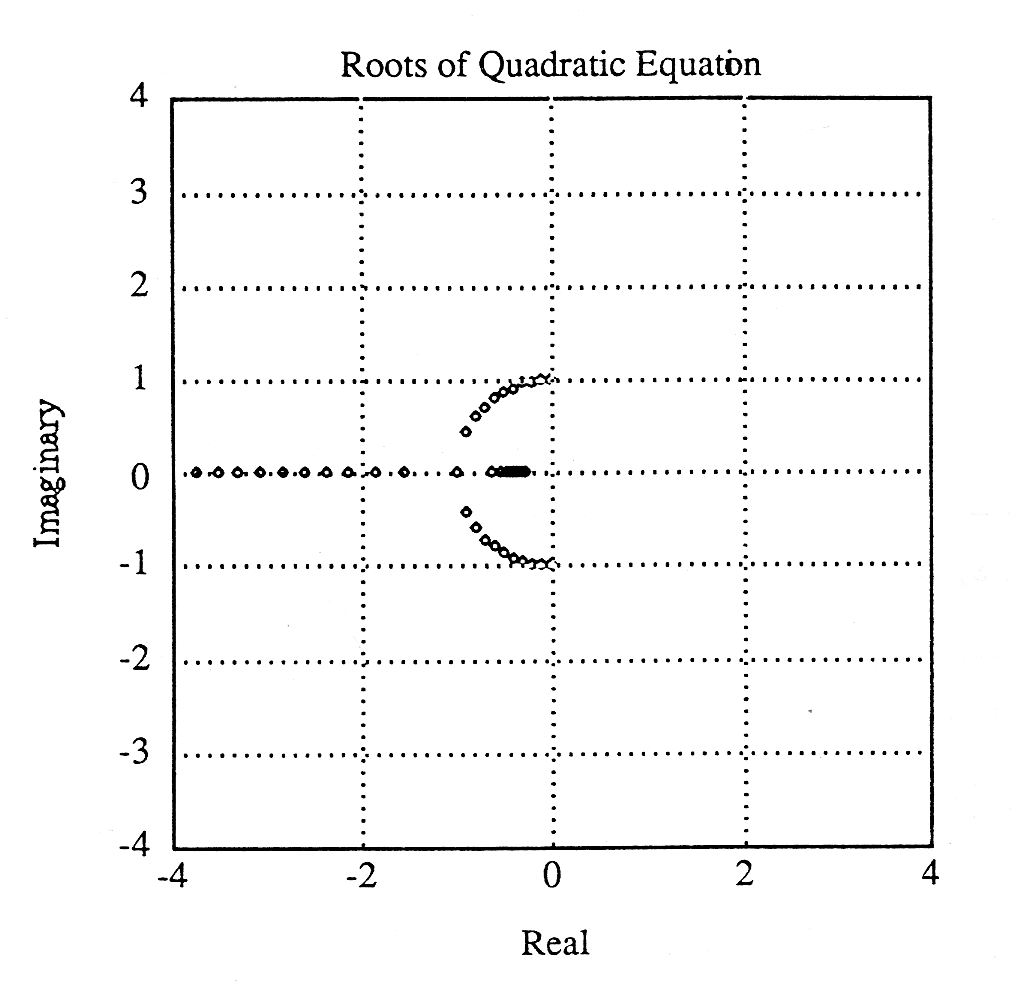| << Chapter < Page | Chapter >> Page > |
There is a version of the quadratic equation that will arise over and over again in your study of electrical and mechanical systems:
For reasons that can only become clear as you continue your study of engineering, the parameter is called a resonant frequency , and the parameter is called a damping factor . In this experiment, you will begin by
Now organize the coefficients of the polynomial into the array . Imbed the MATLAB instructions
in aloop to compute and plot the roots of
as
ranges from
0.0 to 2.0. Note that
is a
array of complex numbers. You should
observe
[link] . We call this “half circle and line” the locus of roots for
the quadratic equation or the “root locus” in shorthand.
for


Notification Switch
Would you like to follow the 'A first course in electrical and computer engineering' conversation and receive update notifications?